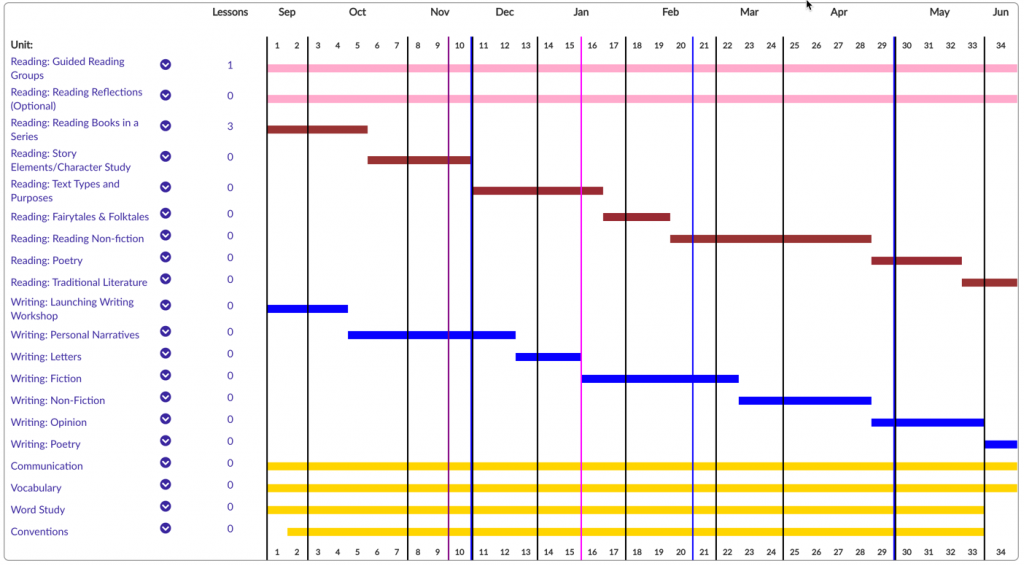Written by Megan Davenport, FariaPD
THREE PERSPECTIVES ON ENGLISH LANGUAGE ARTS CURRICULUM PLANNING
Even as a lower elementary teacher, lover of language, and avid reader, it is difficult to find words that capture the phenomenon of reading. Watching my students first discover words, then become transfixed by stories, and eventually develop into independent readers and writers for the first time made all of the long hours worthwhile.
The Artistry of English Language Arts
The nature of language has so many layers that complicate curriculum planning and instruction-- how can you teach students the many skills it takes to read and write? How can you include everything from phonics to comprehension strategies to sentence structure, grammar, speaking, listening, and more? In what sequence? On top of it all, how do you cultivate a deep love of books and genuine appreciation for literacy?
English Language Arts (ELA) teachers must be incredibly creative and strategic about how to structure instructional time, and therefore units and lessons require thoughtful planning in order to be successful in the long-term. Though we are just skimming the surface with this post, intentionally choosing how to structure your language arts instruction is an important decision that teachers should make in their practice, and their curriculum work should mirror that decision. Consider these three perspectives and corresponding examples developed in the Atlas Curriculum Management System.
1) Keep It Separate: Individual Reading and Writing Units
Rationale: Especially in lower elementary, teachers often have separate reading and writing blocks during their day. Writing may include grammar lessons, sentence structure, recognizing different parts of speech, etc. Reading might include vocabulary, decoding techniques, comprehension strategies, independent reading, etc. Certainly both blocks utilize components of reading and writing, but separating the two may help teachers focus their instruction on the various foundational skills needed to learn the art of literacy.


Keep it Separate! Top: Individual Reading Units. Bottom: Individual Writing Units.
Pros:
- This approach may best mirror the structure of teaching time if teachers have separate reading and writing blocks.
- It may be easier for teachers to focus on explicitly teaching grammar, sentence structure, and other language skills that are sometimes skimmed over when reading and writing are taught together.
Cons:
- As students get older, integrating reading and writing instruction becomes more common. Lower and upper elementary teachers may want to choose a consistent format to make connections easier to see within the curriculum.
2) Put It All Together: Integrated Units
Rationale: Reading and writing are closely related, and teaching the two together can help students make connections. Many teachers spiral grammar and writing lessons into their reading time so that students can write authentic pieces that are tied to the reading material. If this is the case, there is no reason to separate the two!
Pros:
- Integrated reading and writing curriculum can help students connect the information they are reading to their writing. This approach may best mirror the structure of teaching time if teachers have one language arts block of time in their schedules.
- This is the most common format for upper elementary language arts and beyond, so it adds a level of consistency when exploring the curriculum.
Cons:
- Because lower elementary requires a great deal of specific grammar instruction, in addition to the regular writing instruction, it may be hard to capture all of the necessary information in an integrated unit. If this approach is taken for lower elementary, teachers may want to have more, shorter units to achieve a higher depth of detail.
Put it all together: Integrated Units
3) Compromise: One ELA Course, 2 Sets of Units
Rationale: As we begin to look at vertical alignment, it is helpful to keep curriculum as consistent as possible. In this scenario, lower elementary teachers may separate reading and writing units, while upper elementary teachers might integrate their ELA units. This approach means that every grade has one ELA course that can be compared side-by-side, and teachers can still map with the style that best matches their instruction. Best of both worlds, perhaps.
Pros:
- Teachers can maintain consistency in their course names across all grade levels, while maintaining the flexibility to choose how ELA can best be instructed and mapped at each grade level.
- Teachers can differentiate student needs based on formative assessments. For example, if results indicate that students need more in-depth, explicit instruction on "conventions," teachers can revise this unit AND teach it in conjunction with an "opinion essay" unit.
Cons:
- There will be many overlapping units on the calendar, which may cause some confusion/be overwhelming at a glance.

Compromise: One ELA Course, 2 Sets of Units
Check out more


